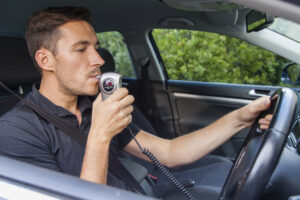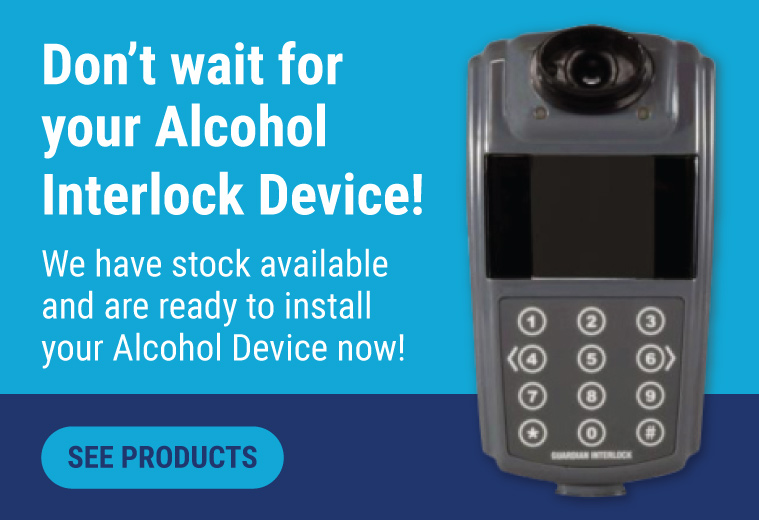
Just How Common Is Drink Driving?
Drink driving.
We all know it’s an extremely serious matter, and we’re all aware of just how disastrous its consequences may be. But what you may not know is just how often this illegal behaviour occurs. In New South Wales alone, 14,000 drink drivers were detected by police in just a 12-month period leading up to September 2022.
While it’s easy to ignore these offences and justify them with a range of explanations, it’s important to remember that every single instance of drink driving has the potential to cause fatalities.
Fortunately, the alcohol interlock program is in place to help prevent these offences from occurring, and as a result, keeps drivers, riders, passengers and pedestrians safe on the roads. Our team at Guardian Interlock have written this piece to offer you some insight into just how big the drink driving problem is in Australia. However, we’ve also offered insight into the Alcohol Interlock Program and the mandated use of ignition interlock devices that are tackling the issue head-on.
So, if you’d like to learn more about this unfortunate problem and the government’s fantastic initiative to resolve these problems, then keep reading.
But Is Drink Driving Really That Dangerous?
We’ve all seen the warnings, and we’re all aware of the dangers, but drink driving still plagues our society and puts many of us at risk every single day. In Australia, approximately 20% of drivers and riders that die on our roads each year have a BAC over the legal limit of 0.05. This is a sad truth that we face, and the problem is that too many people are simply oblivious to the dangers that are associated with this behaviour.
Many Australians often try to work out the number of drinks that they may consume and still have a BAC reading within the legal threshold. Does this sound familiar? Well, in reality, the only way to ensure that you drive safely every time is not to consume any alcohol at all.
Consider this.
Even when you drive with a BAC reading on the 0.05 threshold that applies within Australia, you’re twice as likely to have an accident than if you had no alcohol in your system. Increase that BAC to 0.08, a reading that would result in a mid-range drink driving offence, and you become 7 times more likely to be involved in an accident.
This increased danger occurs because alcohol consumption impairs some of the most vital characteristics of safe driving. Specifically, driving while under the influence of alcohol restricts the ability of the driver to concentrate, significantly reduces their reaction time, limits the accuracy of their perception, inhibits their vision and may cause them to become drowsy. When these factors combine, it inevitably makes for a difficult condition to drive in and creates a dangerous driving environment for your fellow drivers to navigate.
This has created a climate where drink driving is the number one contributing factor in 30% of fatal crashes in Australia. The risks and inherent dangers of these activities are simply too great, and that’s why drink driving must be avoided at all costs.

Introducing The Alcohol Interlock Program
Fortunately, the state and national governments are well informed of the risks and systemic problems we face with drink driving, and they have taken a proactive approach to resolving them. In New South Wales, all drivers that have been convicted of mid-range, high-range, or repeat drink driving offences must complete an alcohol interlock program. This program requires individuals to have an interlock ignition device installed within their vehicle for a fixed period of time that relates to the severity of their offence.
But what is an ignition interlock device?
In essence, ignition interlock devices are small, hand-held pieces of specialised equipment that drivers use to complete breath tests. These devices must be installed by professionals because they are directly attached to the ignition of the vehicle. The driver simply needs to blow into the ignition interlock device’s mouthpiece, just as they would for a random breath test when instructed by a police officer. If the BAC reading of their breath sample is within a satisfactory range, the ignition will be engaged, and the vehicle will start. A breath sample is required each time the individual wishes to start their car, and rolling retests may be required at various points throughout their journey.
The Benefits Of These Programs
While these programs prevent individuals from drinking and driving when they are completing their mandated program, you might be wondering whether these programs have a positive long-term effect.
Thankfully, the installation of interlock devices in cars has been found to reduce the incidence of drink driving. A recent Victorian study found that drink driving offences fell by 79% among relicensed drivers following the culmination of their alcohol interlock program. These are pleasing results that support the overarching objective of these programs, which is to help these individuals disassociate drinking behaviours from driving.
While these programs are effective in reducing the risk of injury for drivers, they also keep their fellow drivers and pedestrians safe by creating a safer and more predictable environment on our roads. Having a breathalyser installed in a car allows individuals to benefit from a phased return to driving following a period of license suspension. This gives the ability to drive once again, but it also offers them time to reflect on their offences. This helps the individual recognise the dangers of these behaviours and take accountability for their actions.
While ignition interlock devices are primarily used within alcohol interlock programs, these self-administered breathalysers can be installed by private individuals of their own accord, or by businesses for commercial purposes. This is often done by safety-conscious drivers that recognise they have a problem with alcohol, and as a result, they take preventative measures to keep themselves and their community safe. Professional sports teams have also been proactive in installing these devices to ensure their athletes adhere to club policies, and transportation-based businesses have also installed ignition interlock devices to ensure their drivers comply with industry regulations.
Do You Need To Install An Alcohol Interlock Device?
Guardian Interlock is among Australia’s most reputable alcohol interlock providers, with locations in every state in Australia. Therefore, you can be sure that your Guardian-approved service centre is qualified for interlock device installation, servicing, and removal of your interlock device, and our devices are compliant with your state’s regulations. Email admin@guardianinterlock.com.au or call 1300 881 005 today to get started with your alcohol interlock program.
We understand how essential a vehicle is, whether for work purposes, family responsibilities, or other commitments. We’re committed to helping our clients remain compliant and on the road. Our customer care representatives are available to take your calls 8.30 am – 5:00 pm Monday to Friday. We also have an Emergency assistance line available 24 hours a day, seven days a week.



